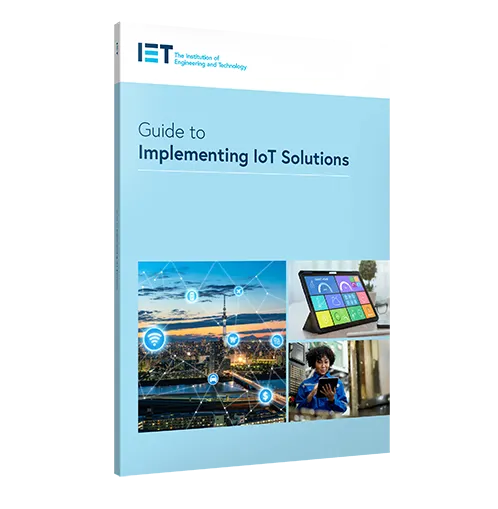Exploring IoT: A practical guide for businesses taking their first steps
The Internet of Things (IoT) is becoming part of everyday life from smart appliances to industrial sensors. Yet for many businesses, especially smaller ones, it remains unfamiliar terrain. Where do you start? What’s worth the investment? And how do you cut through the jargon?
A new guide from the IET offers clear, experience-based answers. Crafted by industry experts, it’s designed to be accessible. As contributor Sven Strassburg of IBM puts it:
“It’s not a deeply technical document. It’s more about the lessons learned from practical experience and a diversity of views.”
That diversity is a strength. The IET Guide to Implementing IoT Solutions brings together real-world insights to help businesses understand both the opportunities and the pitfalls of IoT. Covering key areas such as architecture, networks, data, security, standards, and the digital customer journey, it offers a practical roadmap, whether you're aiming to cut waste, improve customer insight, or rethink your business model.

Starting small, thinking strategically
For smaller businesses concerned about the initial costs or complexity, Andy Fidler from BT offers sensible advice:
“Start small, with clearly scoped pilot projects. Leverage cloud-based IoT platforms that reduce upfront investment. Engage with open-source tools and collaborative innovation ecosystems.”
In essence, this means beginning with manageable projects, perhaps tracking inventory or monitoring energy usage, that can deliver meaningful results without overwhelming resources. Fidler emphasises the importance of focusing on “return on insight,” choosing projects where even modest improvements yield tangible value quickly.
Sceptical about the return on investment? That’s understandable. Fidler addresses this directly:
“Focus on use cases with tangible KPIs such as reduced downtime, faster decision-making, enhanced compliance. Look at sector-specific case studies.”
IoT isn’t a one-size-fits-all solution. When aligned with clear business goals, it can improve efficiency, open new revenue streams, and offer a lasting competitive edge.
Building confidence through practical examples
Adopting IoT can feel daunting, but Andrew Cooney of the Institution of Engineering and Technology (IET) hopes this guide will build confidence:
“We would hope that readers of the guidance will feel more confident when using IoT solutions to introduce efficiencies or adapt their business models.”
To this end, the guide includes case studies and practical examples designed to help readers envision how IoT might fit into their own operations, making the abstract more concrete.
An invitation to engage and adapt
Sven Strassburg highlights that the guide is intended as a starting point, not a definitive statement:
“It’s a point in time and it articulates from our experience those things that we would like to have seen in publications or in articles on this topic.”
Readers are encouraged to take the ideas presented, question them, and adapt them as needed. This open, collaborative approach reflects the diverse backgrounds of the contributors:
“It’s a diverse topic and the people who came together were from a very diverse background... It’s that melting pot of an idea.”
Rather than following trends blindly, the guide advocates for thoughtful exploration and adaptation tailored to individual business contexts.
Perhaps most importantly, Strassburg offers this message to readers:
“I don’t expect anybody to quote us. But I do hope they read it, they think about it, and they come to their own conclusion and go their own way.”
Why this guide matters today
The IoT landscape is changing rapidly: sensors are becoming more affordable, data processing more powerful, and cloud platforms increasingly accessible. Businesses must stay agile to keep pace. This guide arrives at just the right moment, providing a grounded and practical pathway forward.
